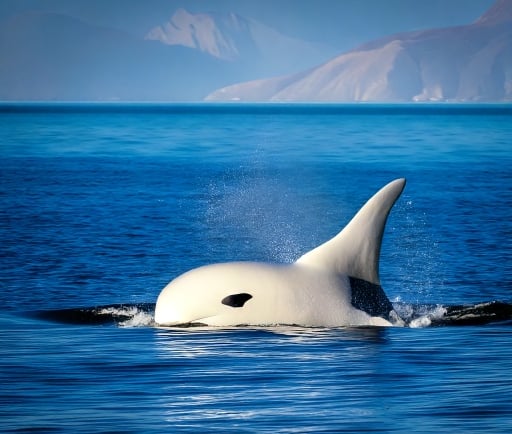The Rare Frosty Killer Whale


Introduction to the CA216C1 Frosty Killer Whale
The CA216C1 frosty killer whale represents an extraordinary anomaly within its species, primarily due to its unique coloration resulting from either leucism or Chediak-Higashi syndrome. This striking appearance, characterized by an unusual predominance of white, sets it apart from the classic black-and-white coloration typically associated with killer whales. In this article, we will explore the implications of these rare conditions and their significance in the broader context of marine biology.
Leucism and Chediak-Higashi Syndrome Explained
Leucism is a genetic condition leading to a partial loss of pigmentation, resulting in pale skin and hair while preserving other characteristics such as eye color. In contrast, Chediak-Higashi syndrome is a rare disorder that not only affects pigmentation but also leads to immunological issues due to malfunctions in the immune system. Both conditions can manifest in various species, but their occurrence in killer whales like the CA216C1 frosty variant is notably rare.
The Ecological Significance of Color Variation
Color plays a crucial role in the survival and social dynamics of marine species. For killer whales, coloration may influence feeding habits, social interactions, and reproductive behaviors. The CA216C1 frosty killer whale may face unique challenges in the wild, from predator recognition to the formation of social bonds within pods. Understanding these variations helps researchers and conservationists devise better strategies for studying and protecting these remarkable marine mammals.
Conservation Efforts for the Frosty Killer Whale
As marine biologists continue to study the CA216C1 frosty killer whale, it becomes essential to engage in conservation efforts. Protecting their habitats, monitoring their populations, and raising awareness about genetic diversity are vital steps in ensuring the survival of both this individual and other killer whales that may exhibit similar variations. Educating the public and conserving the marine environment can contribute significantly toward ensuring a sustainable future for these creatures.
Conclusion
The CA216C1 frosty killer whale embodies the astonishing complexity of marine biology. By exploring the reasons behind its unique coloration and understanding the ecological implications of such variations, we enrich our knowledge of killer whales and their environment. Engagement in conservation initiatives is imperative to protect these extraordinary beings and ensure that future generations have the opportunity to learn from their uniqueness.
